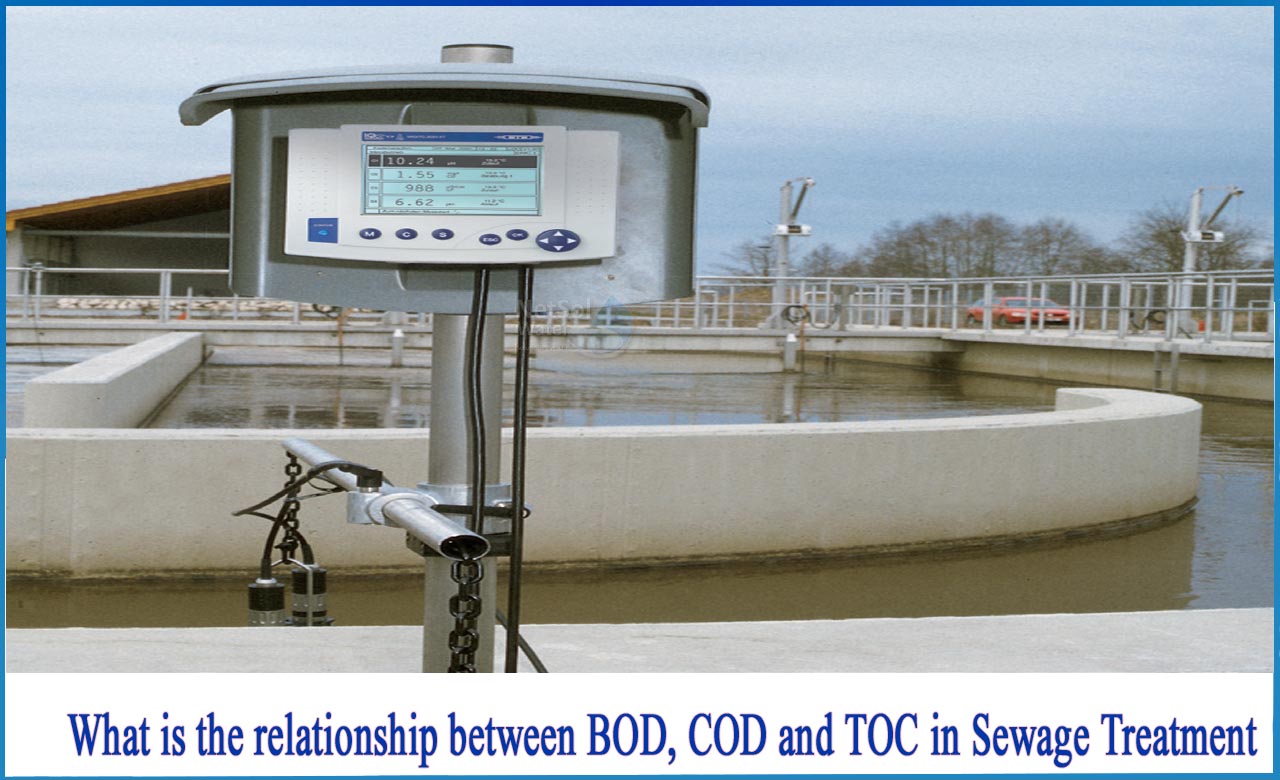How is organic strength of wastewater determined?
The organic strength of wastewater is determined in one of three ways:
1) As a 5-day biochemical oxygen demand (BOD-5),
2) As a chemical oxygen demand (COD), or
3) As total organic carbon (TOC).
The BOD (biochemical oxygen demand), COD (chemical oxygen demand), TOD (total oxygen demand), and TOC (total organic carbon) are the most commonly used sum parameters in waste water analysis. On the basis of a direct carbon assessment, the TOC shows organic contamination. The other criteria are dependent on the amount of oxygen necessary to decrease or oxidize the chemicals in the samples. BOD-5 is commonly used by municipal wastewater treatment plants to determine the organic concentration entering and exiting the plant.
What is BOD?
BOD or Biochemical oxygen Demand is the most used test for determining the content of organic matter in wastewater samples (i.e., relative strength). BOD is founded on the idea that if there is enough oxygen, aerobic biological decomposition (i.e., the stabilization of organic waste) by microbes will continue until all of the waste has been eaten. The BOD test is sometimes known as the "BOD-5" test since it is based on a precise measurement of DO (dissolved oxygen) at the start and conclusion of a five-day period in which the sample is kept in dark, incubated conditions (i.e., 20°C or 68°F).
What is COD?
Chemical Oxygen Demand is the most commonly used alternative to BOD for determining the amount of organic matter in wastewater samples. The COD test is much faster than the 5-day BOD test, taking only a few hours to complete. COD can be used as a near-real-time operational adjustment parameter by wastewater treatment system employees.
COD can be used to test wastewater that is too dangerous to be tested by BOD. Rather than being a replacement for the BOD test, the COD test should be considered an independent measure of the organic matter in a wastewater sample.
What is TOC?
The organic pollution is also reflected in the TOC content of water. The parameteralready implies that it is designed to and must detect the sample's total organic carbon.It is measured directly. It is determined by the oxidation of organic carbon molecules. TOC analyzers can be set up to measure a variety of organic carbon fractions, including TOC, purgeable organic carbon (POC), non-purgeable organic carbon (NPOC), and dissolved organic carbon (DOC).Inorganic Carbon (IC) is eliminated or measured depending on the organic carbon approach used.
What is the relationship between BOD, COD and TOC in STP?
Despite the fact that COD is a separate test from BOD and will produce a greater concentration reading for a given wastewater sample than BOD, it is widely believed that COD and BOD have an empirical relationship. The COD to BOD ratio of a certain wastewater will remain consistent over time, according to extensive monitoring of COD and BOD levels on the same wastewater.For the same sample, COD levels are usually invariably greater than BOD values. As a result, the factor of multiplication is frequently less than one. Once established, the correlation will only apply to the sample that was used to build it (it will not apply to samples from other water sources). A new correlation may be required if the sample composition varies significantly (due to temperature or seasonal variations).Using a correlation, total organic carbon (TOC) readings can also be utilized to determine BOD.

How can we help?
Netsol Water is dedicated to making a long-term commitment to environmental protection and improving people's quality of life.Our goal is to make the world's waste management systems affordable, sustainable, and energy-efficient in order to address the problems of population growth, industrial expansion, and climate change.
Make an appointment to speak with a professional right away!
Call on +91-9650608473;
Or, write us at enquiry@netsolwater.com



